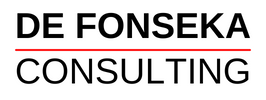
Promoting your small business on social media can help to grow your brand and bring in new customers. But it’s often tricky deciding just what to post. If that feels like you, then this quick guide will help you on your way.
So … you’re a small business owner. You’ve heard all the buzz about using social media to promote and market your business. You want to piece of that action. You’ve set up the channels, and you’re good to go. But you’re not sure what your posts should be about.
If that’s you, then help is at hand. This post will guide you through the things you need to bear in mind, and what sort of posts will suit your business and its audience. So grab your favourite brew, and let’s get stuck in!
One Main Idea
I should start by mentioning that there are many variables that you need to consider when planning what to post, such as the nature and demographics of your audience, and your business goals etc.
But since this is a ‘short and to the point’ guide, we’ll keep things super simple and focus on just one guiding principle.
And that principle is:
Always have your target audience in mind, and aim to provide value with every post you share.
People are busy, but they are still giving you their time and attention. And it’s reasonable to think that they would expect something of value in return.
Also, people like doing business with the people they like and trust. And people tend to like and trust those who help them, and bring value to their lives.
So providing value upfront (for free), without asking for anything in return, is a strategy that is going to help you earn the trust of your audience. And they will reward you by becoming your customers and die-hard fans.
What’s in it for Me?
The best way to provide value consistently is to look at everything from your audience’s point of view, and try to answer the question, ‘What’s in it for me?’
- Why should they continue to follow you on social media?
- Why should they respond to your posts?
- Why should they share your posts with others?
- Why should they take whatever action you want them to take?
- Why should they buy from you?
So ,stay true to this rule, and you’ll be golden!
Now that we have the main idea covered, let’s see the many different ways in which you can apply it, through your social media posts.
‘How To’ Posts
This is probably the most valuable type of content you could share and I would encourage anyone to create and share as much of these posts as possible.
If you sell physical products, whether it’s art, furniture, clothing or some type of widget or machine, you could make helpful content addressing one or more of the following topics:
- How to use the product
- How to use the product with a new utility or complementary product (The above video from the Raspberry Pi Foundation is a good example of this type of post. The Raspberry Pi is a low-cost, credit-card-sized computer.)
- How to safely store the product for long periods, when not in use
- How to clean the product carefully
- How to replace a broken or worn out part
- How to recycle the product at the end of its lifecycle, and so on.
The above video from the Raspberry Pi Foundation is a good example of this type of post. (The Raspberry Pi is a low-cost, credit-card-sized computer.)
On the other hand, if you sell something like tea, you could address issues such as:
- How to brew the perfect cuppa
- The best way to store it, to ensure freshness and lasting quality
- How to pair it with snacks—which foods go best with the different varieties of your teas, and so on.
Although these posts are best suited to businesses selling products, you can still adopt this approach (of being helpful), even if you’re in a service industry. The posts need not be strictly of the ‘how to’ variety, but they must still provide value.
For example, say you’re an accountant, you could address topics that your audience will find helpful, such as:
- Approaching deadlines (for filing taxes)
- Changes in interest or other rates
- Updated contact information for the government’s tax office, and so on.
This post from Dave Ramsey (writer, radio host and personal finance guru) does a pretty good job of giving some solid advice in an Instagram post:
Posts that Spell out the Benefits
This is another excellent way to provide value: show what useful outcomes or results your product (or service) will bring to the customer.
For example, if you run a restaurant, maybe you can focus on the convenience you provide. You can then highlight the many different ways in which the customer can benefit, such as:
- They don’t need to cook (this is especially valuable after a hard day’s work)
- You offer takeaway (they don’t need to dine in)
- You offer deliveries (they don’t even have to come and pick it up)
- They can order and pay by phone, using your free app
- You offer free parking
- The savings they can make using your loyalty discount, and so on.
Posts that Inspire, Entertain or Elicit Emotion
While most people appreciate helpful information, there are other things that appeal to us at a more human level. We value and hold dear things such as beauty, inspiration and humour.
You can therefore sprinkle in small amounts of posts that appeal to the ‘human’ side of your audience. These could include:
- Inspirational quotes that are related to your industry or niche
- Attractive images of your products that spark desire
- Posts showing showing the amount of care you put into creating your products (see more on this below)
I LOVE how so many brands are sprinkling in a bit of humour in their posts. It’s such a breath of fresh air and I can’t get enough of it!
If you’re like me and don’t mind a bit of rude humour (like a granny flipping a birdie after firing a machine gun—all in the name of coffee), then, you’ll love this post from my friends over at Black Rifle Coffee.
One Last Thing
I have one other idea that you might find useful, and that is the idea of ‘documenting your journey’. This is an idea that I stole from the one and only, legendary marketer Gary Vaynerchuck, of Vayner Media (I tend to steal most of his ideas, because they work).
He encourages people who are just starting out to: ‘Document. Don’t create.’
This strategy will suit those who want to make and share a lot of content, daily. They can share snippets as they go about their day, without needing to make time specifically for creating content.
It could work especially well for creatives like writers, artists and musician, who can document their process of creation.
My friend (and client) Sharon does a pretty good job of this and routinely posts content like this short video of her working on projects.
So there you have it.
I hope that you now feel better equipped to start creating and sharing more posts to promote your business on social media.
If you found it useful, please share it with your colleagues and friends. And let me know in the comments, if you have any questions, or any ideas you’d like to share.
As always, thank you so much for being here and for reading!
If you’re on Instagram, don’t forget to swing by and say hi. My username is @indikadefonseka
